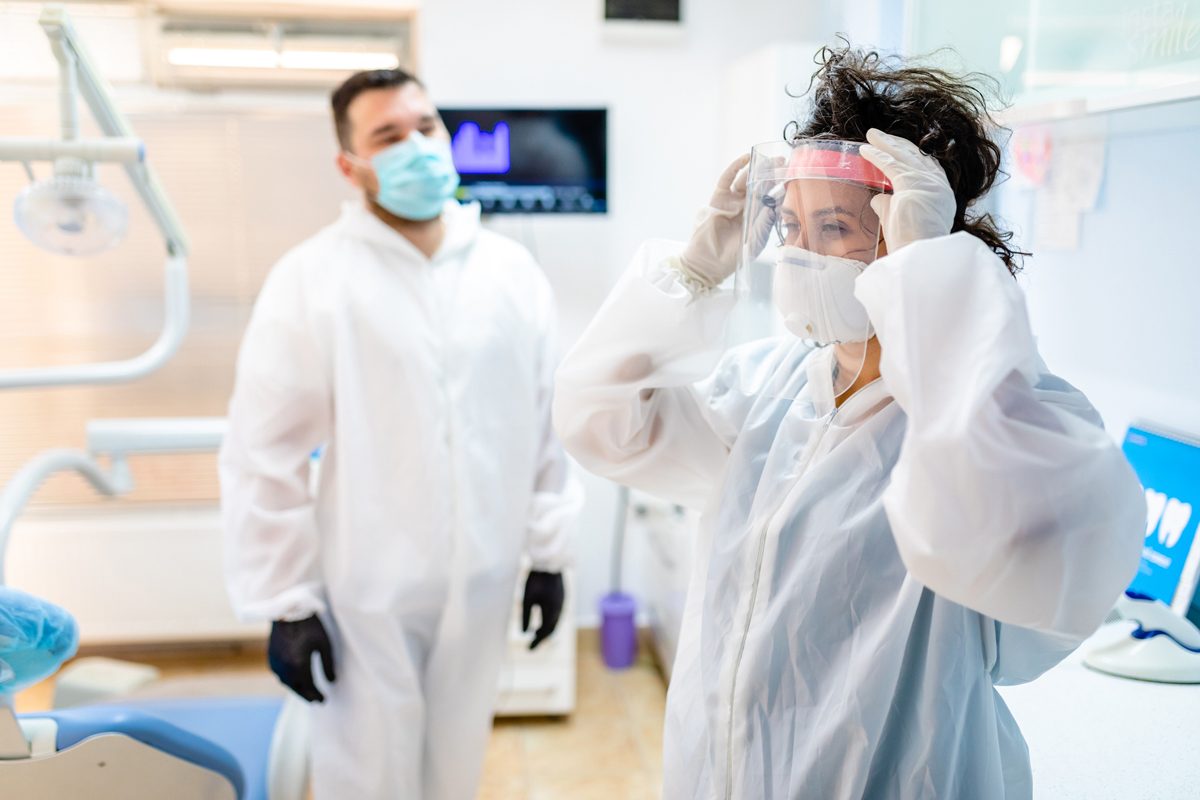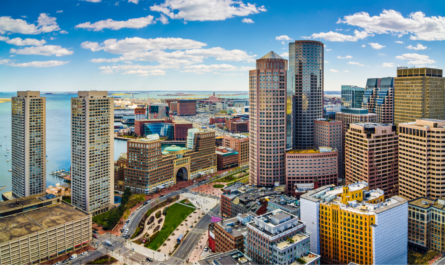A PPE leader examines how the spike in demand due to COVID-19 compares to other historical markers, and how it could reshape the industry moving forward.
Editor’s note: Billy Harris, CEO of Sri Trang USA, Inc., spoke with Efficiency in Group Practice Publisher Scott Adams on the history of the glove business as it relates to public health scares, how demand spiked during COVID-19, the challenges of bringing manufacturing of gloves to the United States, and more. The following were ten insights from the interview.
This isn’t the first time we’ve faced a PPE shortage
In 1989, the Food and Drug Administration (FDA) issued universal precautions because of AIDS. The universal precautions were just a simple statement: if you encounter bodily fluid, you should glove, gown, and mask. “That took the whole industry by a little bit of surprise,” said Harris.
For the glove business, the universal precautions of 1989 meant explosive growth. In that particular year in Malaysia alone, the Malaysian government issued 300 permits for the manufacturing of gloves, Harris said, “though not all of those permits were fulfilled, or factories built.” At the time, there was still a fair amount of domestic production in the United States.
However, since then, manufacturing has migrated to places like China, Indonesia, Thailand, and Vietnam.
Glove manufacturing didn’t leave the U.S. because of cheap labor
When the gloves produced in the United States migrated to South Asia and China, it wasn’t because of cheap labor, Harris said. “Gloves left because that’s where the raw material is, and the raw material most in demand at the time would’ve been latex.” In the 1980s and up until about 2000, latex would have been the first choice of product, then vinyl, and then nitrile, Harris said. Today it’s nitrile, vinyl, and then latex.
Following the universal precautions in 1989, there’s been an event every few years that felt like it was going to have an impact on infection prevention and PPE
For instance, in 2001, you had the anthrax scare with the U.S. Postal Service, Harris said. “At one point, the U.S. Postal Service wanted everybody to glove and have some form of protection, but that lasted for about three months. The U.S. Postal Service went out and bought millions of gloves. Three months later they were trying to return them because none of the workers would use them, and the whole anthrax scare went away due to good law enforcement practices to get to the root cause of it.”
- 2002: A West Nile Virus outbreak occurred, “but it really didn’t have an impact on the U.S. market in terms of any unusual demands outside of the normal demand.”
- 2003: SARS. “It didn’t really impact availability of product.”
- 2005: The system was challenged with bird flu. “When I say the system, I mean the manufacturing community,” Harris said, “which needed to make sure we had enough gloves not just in the U.S., but other hot spots of the world. So, there was a demand issue.”
- 2006: An E. coli scare, “but that did not negatively affect the glove business,” Harris said.
- 2008: An economic downturn. “Interesting enough, at least in the glove business, when there were tough economic times, we tended to thrive better both in volume to the market and in profitability for the company.”
- 2009: H1N1, or swine flu, “and again that was a global issue that we saw, and it created a higher demand for product. But the demand never really exceeded the capacities that were already installed.”
- 2014: Ebola made headlines. It was mostly in African regions with some hot spots in other parts of the world. “In the U.S. we had a couple of places, but that was really squashed out. It got so much attention from the healthcare community, the scientific community, that it became almost a nonissue. But it was a little bit of a scare.”
- 2015: Measles, which didn’t really challenge PPE at that time.
- 2016: Zika.
- 2019: Another outbreak of measles.
- 2020 will be remembered as the year of COVID. However, December 2019 was the discovery of the virus and analysis has found that first cases were likely November 2019, Harris said.
Not surprisingly, during the peak of the COVID-19 crisis, demand was much higher than installed capacity
Harris said at its peak on a global basis and even in the U.S., the demand for gloves was 70% higher than the installed capacity. “It’s a little bit difficult to really get a hard number, but we use 70%. Maybe you can discount some because you get three inquiries that might be for the same millions of gloves for some government agency, or some state agency, or just some local hospital,” he said. “But we just know that the demand is higher than the available supply.”
Why gloves are harder to produce
For masks, you can buy a machine that will make a mask and put it in your basement, your living room, or any empty building anywhere in the world and be in the business of making those products in relatively short order, said Harris. There is a raw material issue that you need, but that raw material is fairly available both domestically and abroad. Gowns are of a similar situation. “A little bit more higher tech in terms of the machine that you need to buy, but you can buy a machine, put it in your basement or an empty building, and in 60 to 90 days be making product domestically.”
But gloves are very different, “because you don’t buy a machine and put that in your basement, your living room, or an empty building,” said Harris. The average single production line of making gloves is three stories tall and 100 yards long. For example, Sri Trang’s group has three manufacturing sites with seven production facilities. The largest of the group sits on 190 acres of land.
“So, you don’t just go build a glove line,” Harris said. Plus, the raw material for gloves is still coming from either Korea, Taiwan, mainland China, Malaysia, Japan, or Thailand. “That’s where your nitrile raw material comes from, and you have 12 producers in total that are based in each of those countries.” For petroleum based – paste or pellets – readily available raw material is in China, and 99% of the world’s vinyl gloves come from China.
While it’s possible that a new group, or even someone already in the glove business would set up manufacturing sites in different parts of the world, it would be challenging. “It’s really all about the raw material, because it’s always best to ship a finished good than it is to ship a raw material,” said Harris. “Of course, in times like this, people get a little bit energized, but then do they follow through and actually do it?”
It takes a reasonable amount of space, and a reasonable amount of capital. If you invest somewhere around $30 to $40 million, that might build a 12-line production facility somewhere in the United States. “And then you’ve got regulatory challenges to navigate your way through, because when building a glove factory, it’s similar to that of a chemical plant even though you’re not making chemicals,” Harris said. “You need a lot of water. You must have holding ponds to return the water, and that’s the big challenge that you typically have here in the U.S. So, it’s a big investment. And then of course you’ve got to import all your raw materials.”
However, other PPE, like masks, hand sanitizer and gowns may come back to the United States for production
Producing masks, hand sanitizer and gowns in the United States is much more feasible due to the raw materials and equipment needed. “If it’s not here in the U.S., it’ll be nearby in Mexico or Central America. Some of that already exists.”
China’s export problems with PPE supplies didn’t necessarily affect all glove manufacturers
Harris said Sri Trang was fortunate because it is based in southern Thailand, and not dependent on any significant raw material or labor coming from China. “In the U.S. it’s all about nitrile gloves, and we have nitrile raw material that we can buy from Malaysia, Taiwan, Korea, Japan or Thailand, and those are our suppliers and we had no disruption in the supplies,” he said. “Packaging is all made and produced in Thailand, and we have the benefit of using 80% post-consumer recycled packaging, and that’s been part of our program all along. No disruption there. Then the few other little chemicals and things, it was zero impact for us.”
Giving manufacturing capacity “110%” is a myth
“Pre-COVID-19, we were running at about 93% capacity,” said Harris. “With COVID, we jumped full utilization of all assets, but the reality of manufacturing across any industry is that the theoretical capacity and actual capacity rarely equal.”
PPE demand has turned the supply chain upside down
All of us grew up in a time that everything was focused on just-in-time (JIT) delivery and single sourcing,” Harris said. “It’s not going out the window tomorrow, but it’s going to go out of the window eventually because COVID-19 is going to leave some deep scars and memories. People will be in the position to say, ‘Well that’s not going to happen to me ever again.’”
Yes, there will be higher demand, because more people across all industries are going to glove, gown, and mask. Some will be more short-term. For instance, some of the inquiries that Sri Trang received over the past few weeks are mostly coming from industry. “They’re trying to get their employees back to work, whether it be in a factory or a restaurant.”
Another example was the cruise ship industry. When it was shut down during COVID, those companies buying gloves for cruise ships found themselves sitting on idle inventory. “Well, that idle inventory was only idle until somebody figured out that, ‘Oh, there’s some idle inventory, let’s go buy it because we can use it over here in other parts of the market.’” Anybody that was in the food service business saw a decline for a short period of time. But their glove sales and mask sales remained because they started selling it to customers who were not in their traditional wheelhouse.
The dental market did the same thing, Harris said. For seven to eight weeks, they went from 100% utilization in dentistry down to maybe 15%. It was only the dentist and maybe one other person in the office during that period of time. The dental supply people were sitting on inventories and having inventories coming in, so they started selling gloves, masks, gowns and hand sanitizer to everybody. They even went to the market to try to get more. Some of the dental distribution business is now trying to figure out how to leverage that long-term in healthcare and the medical side, not just the dental side, Harris said. So, unless you were specializing in cancer treatments and things of that nature, you saw no decline. But the general practitioner certainly saw a big decline.
There’s going to be a change in the supply chain, Harris said. The market’s going to look very different, and the demand will probably jump from 70 billion to maybe 90 billion when it all starts to settle out, “because we’re all going to be doing more cleaning, deep cleaning, things of that nature.”
Market growth
How much has the glove market grown? Around 1990, the U.S. market for disposable gloves and exam gloves was estimated to be about 15 billion pieces, said Harris. In 2019 pre-COVID, the estimate was about 70 billion gloves in the U.S. and 300 billion globally. “So, in a 30-year period, we went from 15 billion gloves to 70 billion in consumption.”
The glove market isn’t exclusive to healthcare. Harris qualified the number as including disposable and exam gloves, and for markets that include the food service industry. “But it goes to show how just the hand protection and thin wall disposable gloves has grown in that 30-year period.”





